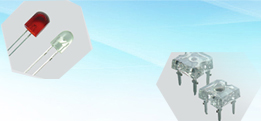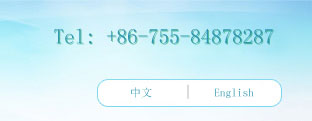General Information
GENERAL INFORMATION
FORMING:
1. Please do not form the LED after soldering. If forming is necessary, it must be done before soldering.
2. Any unsuitable stress applied to the epoxy may break bonding wires in LED.
SOLDERING:
1. Soldering Bath - 260°C ±5°C within 5 seconds.
Soldering Iron - Under 30W within 5 seconds. (1.6mm from epoxy body)
2. Do not apply any force or mechanical stress onto the leads or epoxy body during soldering heat is remained.
PREVENTING OVER CURRENT
1. In order to operate LED in stable condition, please put protective resistors in series.
2. Resistor value can be determined by the formula
R = (Vs-Vf) / lf
Vs = Source Voltage
Vf = Forward Voltage of LED
lf = Recommended Current of LED (10-20mA)
BRIGHTNESS
1. For the purpose of obtaining uniform brightness, LEDs shall be kept at the same current
2. It is useful for uniform brightness if you use larger source voltage and protective resistor
RELIABILITY TEST
Follows MIL-STD standard
| TEST | CONDITIONS |
| THERMAL SHOCK TEST | LED placed in a chamber (-35°C) for 20 minutes, temperature increased instantaneously to +105°C for 20 minutes. The duration of the test shall be for 10 complete cycles. |
| HUMIDITY TEST | LED placed in humidity chamber which is maintained at 65C, RH95%. The duration of the test is for 120 hours. |
| LIFE TEST | LED connected to a source of power and charged with 20mA at room temperature (25°C) for 1000 hours |
| SOLDERABILTY TEST | The pins od LED (1.6mm from body) dipped into tin which is maintained at 260°C ±5°C. The duration of the test is for 5 seconds. |
| VIBRATION TEST | LED placed on a vibrator which is maintained at 10-55-10 Hz/minute. 0.82 mm amplitude. The duration of the test is for 30 mnutes. |
THE MEASURING TERMS AFTER TEST AND FAILURE CRITERIA AS FOLLOWS:
| MEASURE TERMS | FAILURE CRITERIA |
| LUMINOUS INTENSITY(lv) | LOWER STANDARD LIMIT x 0.5 |
| FORWARD VOLTAGE (VF) | UPPER STANDARD LIMIT x 1.2 |
| REVERSE CURRENT(lR) | UPPER STANDARD LIMIT x 2.0 |
ABSOLUTE MAXIMUM RATINGS
1. Test Condition For Each Parameter:
| Parameter | Symbol | Unit | Test Condition |
| Reverse Voltage | VR | V | VR=5.0Volt |
| Reverse Current | lR | µA | lF=20mA |
| Forward Voltage | VF | V | lF=20mA |
| Luminous Intensity | lV | mod | lF=20mA |
| Viewing Angle | 2θ | Degree | lF=20mA |
| Spectra Line Half-Width | λ | nm | lF=20mA |
| Power Dissipation | PD | mW | lF=20mA |
| Peak Forward Current (Duty 1/10 1Khz) | lF (Peak) | mA | lF(Peak)=150mA |
2. Absolute Maximum Rating:(Ta=25°C)
| Reverse Voltage | 5.0Volt |
| Reverse Current(VR=5V) | <= 10 µA |
| Operating Temperature Range | -40°C ~ +80°C |
| Storage Temperature Range | -40°C ~ +80°C |
CAUTION FOR STATIC ELECTRICITY
These products are Gallium Nitride (GaN) or Indium Gallium Nitride (InGaN) light emitting diodes (LEDs). There are extremely sensitive to static ESD damage. The user must take absolutely secure countermeasures against static electricity and surge when handling products.
Blue, Green, White are InGaN materials are ESD classified, any manufacturing or workstations where GaN or InGaN devices are handled should be rated at 100V maximum.
Proper grounding of products (via 1MΩ) , use of conductive mat, semiconductive working uniform and shoes, and semiconductive containers are considered to be effective as countermeters against static electricity and surge.
An ionizer is recommended to be used in the facility or environment where static electricy may be generated easily, and soldering iron with a grounded tip is also recommended.
To install a protection device, in the LED driving circuit, which does not exceed the max rating for surge current during on/off switching.
Previous page: About Us
Next page: Production Equipment




